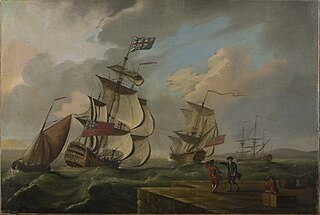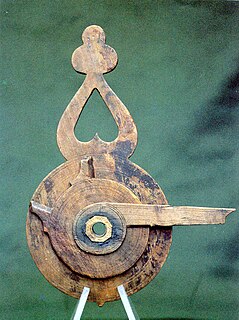Several vessels of the Royal Navy have been named HMS Nonsuch, presumably named after Nonsuch Palace:

HMS Royal Oak was a 74-gun third-rate ship of the line of the Royal Navy, built by Jonas Shish at Deptford and launched in 1674. She was one of only three Royal Navy ships to be equipped with the Rupertinoe naval gun. Life aboard her when cruising in the Mediterranean Sea in 1679 is described in the diary of Henry Teonge.

HMS Warspite was a 70-gun third-rate ship of the line of the Royal Navy, launched in 1666 at Blackwall Yard. This second Warspite was one of the five ships designed to carry more provisions and lower deck guns higher above the water than French and Dutch equivalents. In 1665 the Second Anglo-Dutch War had begun and on 25 July 1666 Warspite was one of 23 new English warships helping to beat a Dutch fleet off North Foreland, Kent. She won again distinction on Christmas Day 1666 as senior officer's ship out of five sent to protect an important convoy of naval stores from the Baltic. Warspite next took part in the first action of the Third Anglo-Dutch War on 28 May 1672 off Southwold Bay, Suffolk. This desperate 14-hour battle, generally known as Solebay, was a drawn fight; but Warspite successfully fended off a pair of Dutch fire ships exactly as she had done off North Foreland. By 1685, she was mounting only 68 guns.

HMS Falkland was a 50-gun fourth-rate ship of the line of the Royal Navy, built by Holland of New Castle, New Hampshire, and purchased by the navy in 1696.
President was a 38-gun fourth rate frigate of the Royal Navy, originally built for the navy of the Commonwealth of England by Peter Pett I at Deptford Dockyard, and launched in 1650.

HMS Newark was an 80-gun third rate ship of the line of the Royal Navy, launched at Hull on 3 June 1695.
HMS Ranelagh was a three-decker 80-gun third-rate ship of the line of the Royal Navy, launched at Deptford Dockyard on 25 June 1697. She took part in a number of actions during the War of the Spanish Succession, including the Battle of Vigo in 1702 and the Battle of Vélez-Málaga in 1704.

HMS Canterbury was a 60-gun fourth-rate ship of the line of the Royal Navy, launched at Deptford on 18 December 1693.

HMS Dartmouth was a 50-gun fourth-rate ship of the line of the Royal Navy, launched on 3 March 1698 at Southampton.
HMS Nonsuch was a 50-gun fourth rate ship of the line of the Royal Navy, launched at Deptford in 1696.

HMS Hampton Court was a 70-gun third-rate ship of the line of the Royal Navy, built at Rotherhithe according to the 1706 Establishment and launched on 19 August 1709.
HMS Sunderland was a 60-gun fourth rate ship of the line of the Royal Navy, built to the 1719 Establishment at Chatham Dockyard, and launched on 30 April 1724.
HMS Leopard was a 50-gun fourth rate ship of the line of the Royal Navy, built according to the 1733 proposals of the 1719 Establishment at Blackwall Yard, and launched on 30 October 1741.

HMS Sutherland was a 50-gun fourth rate ship of the line of the Royal Navy, built at Rotherhithe according to the dimensions laid out in the 1733 proposals of the 1719 Establishment, and launched on 15 October 1741.

HMS Devonshire was a 66-gun third rate ship of the line of the Royal Navy, built to the dimensions laid out in the 1741 proposals of the 1719 Establishment at Woolwich Dockyard, and launched on 19 July 1745.

HMS Princess Louisa was a 58-gun fourth rate ship of the line of the Royal Navy, built to the dimensions prescribed in the 1741 proposals of the 1719 Establishment at Limehouse, and launched on 1 July 1744.

HMS Maidstone was a 50-gun fourth rate ship of the line of the Royal Navy, built at Rotherhithe to the dimensions laid down in the 1741 proposals of the 1719 Establishment, and launched on 12 October 1744.

HMS Advice was a 50-gun fourth rate ship of the line of the Royal Navy, built at Southampton to the dimensions laid down in the 1741 proposals of the 1719 Establishment, and launched on 26 February 1745.
HMS Norwich was a 50-gun fourth rate ship of the line of the Royal Navy, built according to the 1741 proposals of the 1719 Establishment at Blackwall Yard, and launched on 4 July 1745.

HMS Ruby was a 50-gun fourth rate ship of the line of the Royal Navy, built at Bursledon in Hampshire to the dimensions specified in the 1741 proposals of the 1719 Establishment, and launched on 3 August 1745.










